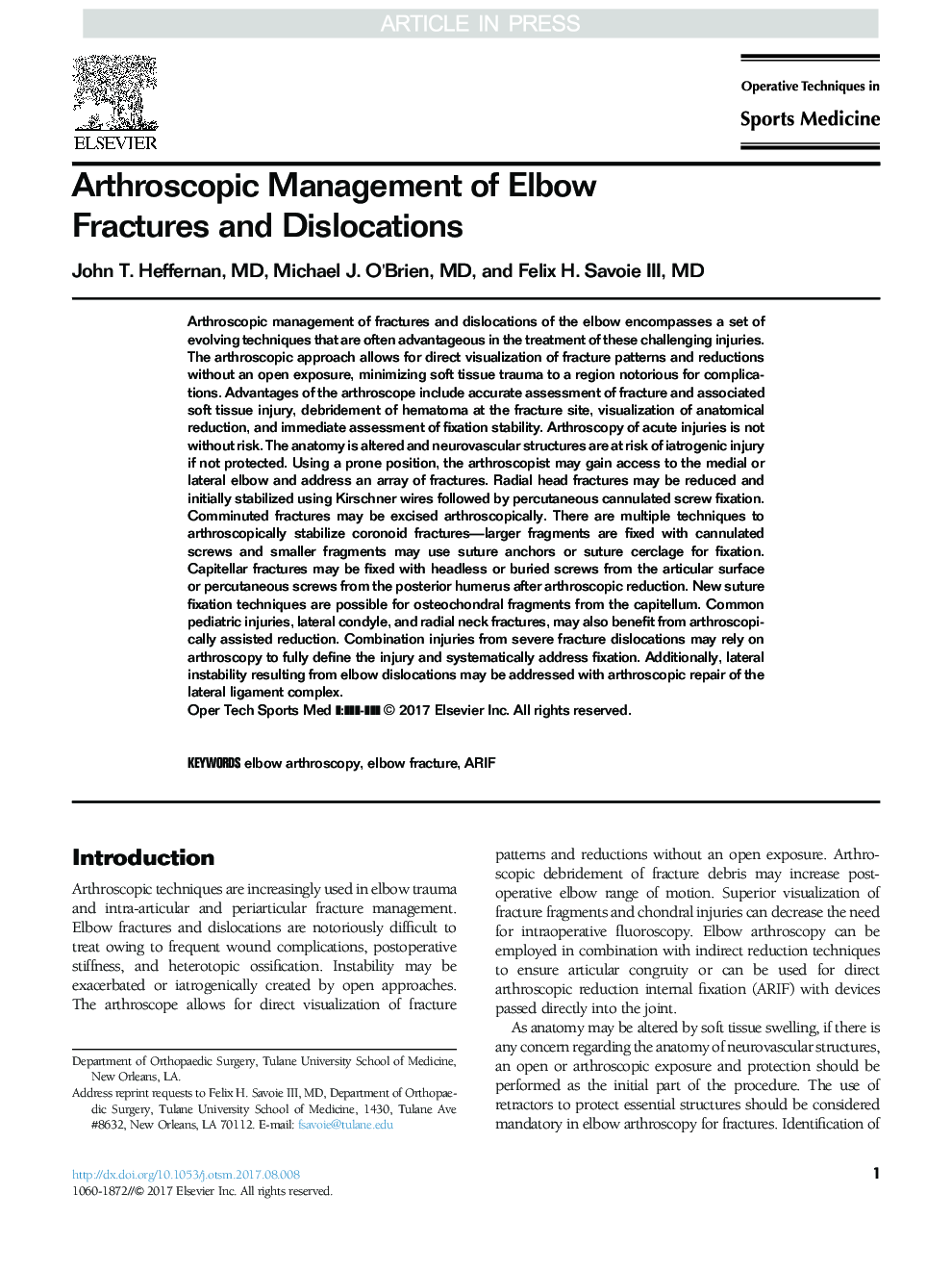| Article ID | Journal | Published Year | Pages | File Type |
|---|---|---|---|---|
| 8801886 | Operative Techniques in Sports Medicine | 2017 | 9 Pages |
Abstract
Arthroscopic management of fractures and dislocations of the elbow encompasses a set of evolving techniques that are often advantageous in the treatment of these challenging injuries. The arthroscopic approach allows for direct visualization of fracture patterns and reductions without an open exposure, minimizing soft tissue trauma to a region notorious for complications. Advantages of the arthroscope include accurate assessment of fracture and associated soft tissue injury, debridement of hematoma at the fracture site, visualization of anatomical reduction, and immediate assessment of fixation stability. Arthroscopy of acute injuries is not without risk. The anatomy is altered and neurovascular structures are at risk of iatrogenic injury if not protected. Using a prone position, the arthroscopist may gain access to the medial or lateral elbow and address an array of fractures. Radial head fractures may be reduced and initially stabilized using Kirschner wires followed by percutaneous cannulated screw fixation. Comminuted fractures may be excised arthroscopically. There are multiple techniques to arthroscopically stabilize coronoid fractures-larger fragments are fixed with cannulated screws and smaller fragments may use suture anchors or suture cerclage for fixation. Capitellar fractures may be fixed with headless or buried screws from the articular surface or percutaneous screws from the posterior humerus after arthroscopic reduction. New suture fixation techniques are possible for osteochondral fragments from the capitellum. Common pediatric injuries, lateral condyle, and radial neck fractures, may also benefit from arthroscopically assisted reduction. Combination injuries from severe fracture dislocations may rely on arthroscopy to fully define the injury and systematically address fixation. Additionally, lateral instability resulting from elbow dislocations may be addressed with arthroscopic repair of the lateral ligament complex.
Keywords
Related Topics
Health Sciences
Medicine and Dentistry
Orthopedics, Sports Medicine and Rehabilitation
Authors
John T. MD, Michael J. MD, Felix H. MD,
